This third episode about my street photography departs from the path set in the first two episodes. The photographs in those episodes, Private Spaces and Existential States, were conceptual in scope, whereas those in this episode are more…maybe “narrative” would be the term. In this episode of the Monochrome Chronicles, each photograph stands alone.
Many of my most compelling images tell a story. Ironically, or maybe not so ironically, the story first appears to me when the image already is in the negative or sometimes in the print, rather than when I am shooting on the streets. Seeking out a story when I’m on the street would be contrary to my method of shooting. Usually, I go into autopilot mode when I’m shooting. My rational mind goes into hibernation and my little inner voice takes over. My camera leads and I follow.
Consequently, these story-telling images cover a wide territory. Sometimes a theme will develop around a series of images but each photograph tells its own story. If that sounds like an apology for my lack of editorial point of view, then you have misinterpreted my intention. Think free association instead.
As the photographer, I strongly believe that the responsibility for reading these stories rests with the viewer. The interaction should be between the viewer and the image. I stay in the background. If different viewers see different stories, then I have achieved my goal.
Though the range of stories in this section is quite wide, the one factor that unites them is that they all came from my camera. Of course, I have to use editorial judgement in selection and sequencing of the images. After that I relinquish my responsibilities. The photographs take on a life of their own.
And speaking of storytelling, I’m reminded of a quote possibly from Mark Twain that goes something like, “Start at the beginning, go through the middle, and stop at the end. And make sure the end comes as close to the beginning as possible.” I try to follow this advice for the Monochrome Chronicles.
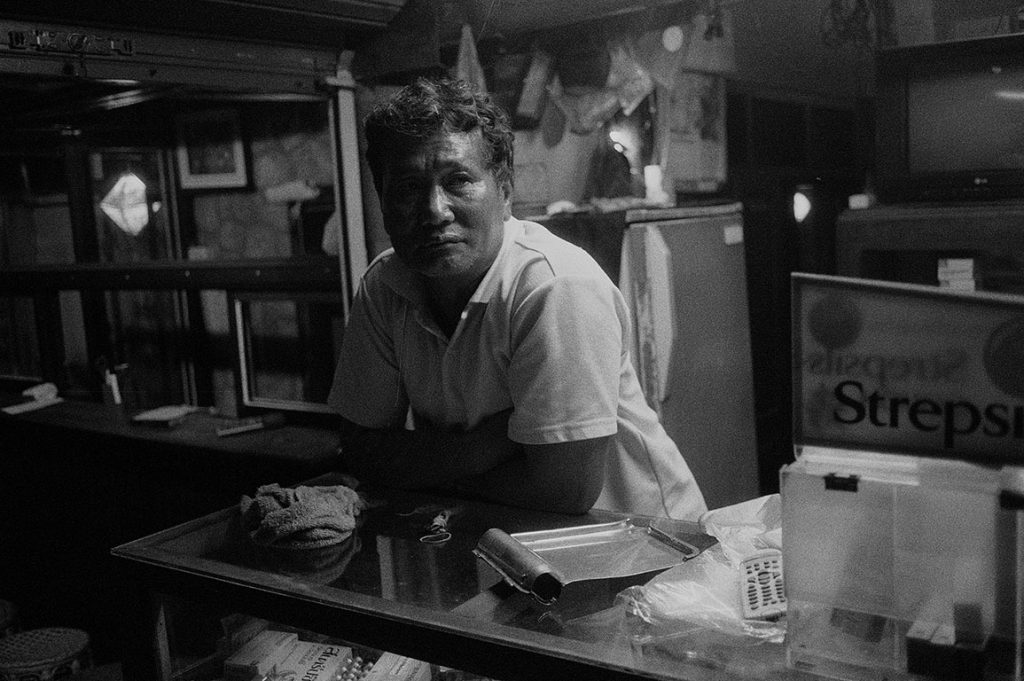
He might be the protagonist. He might have been a bystander or a witness. He might even be the narrator. In my mind, I can almost hear him telling the story.
The NYC subways are the setting for many stories. Of course, this is hardly virgin territory, either for photography or for storytelling. I suppose I rode the subway nearly every day when I lived in the city. Imagining the stories of the other passengers relieved the tedium.
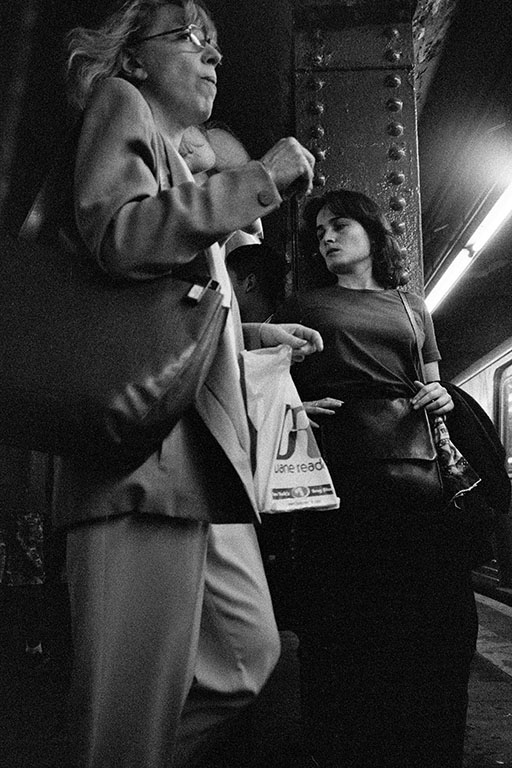
The body language and facial expressions of the two women are unmistakable, though distinctly different between the two of them. This scene could be almost anywhere in the city. Riding the subway is fraught with anxiety at the best of times.
The camera angle for this photograph, from down low, contributes to the feeling of danger. Without doubt, this was a shoot-from-the-hip shot. A small point-and-shoot camera held at arm’s length by my side would have been inconspicuous.
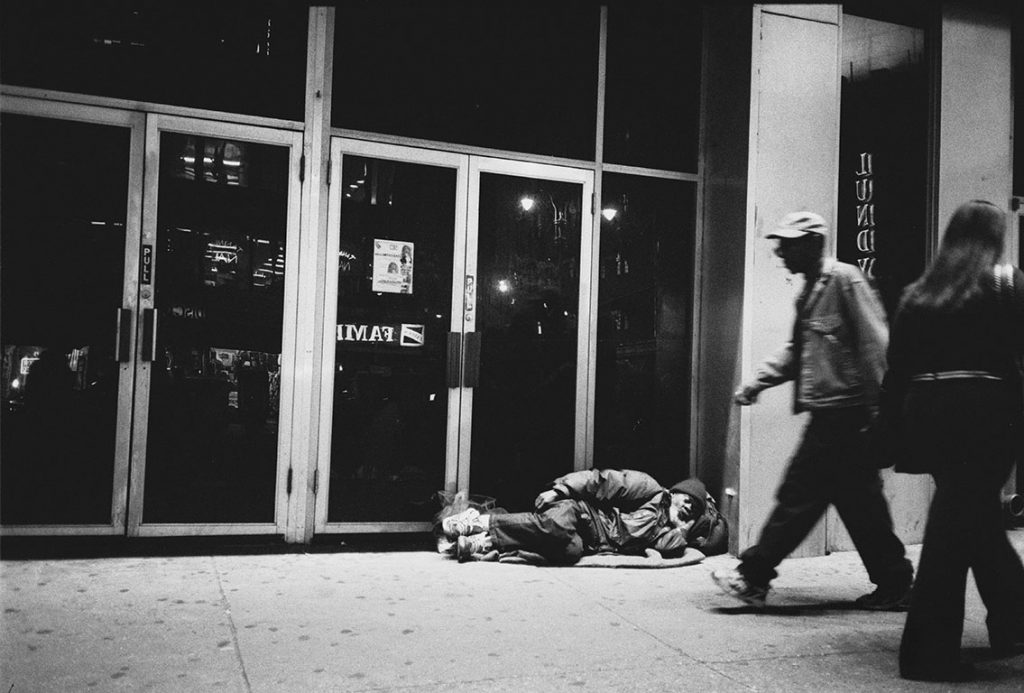
One snowy night during my first winter in the city, I came across a man sleeping in the snow on a sidewalk. Naively, I called the police to report about the man, but the officer responded, “Well, is he dead? We can’t do anything about it unless he’s dead.”
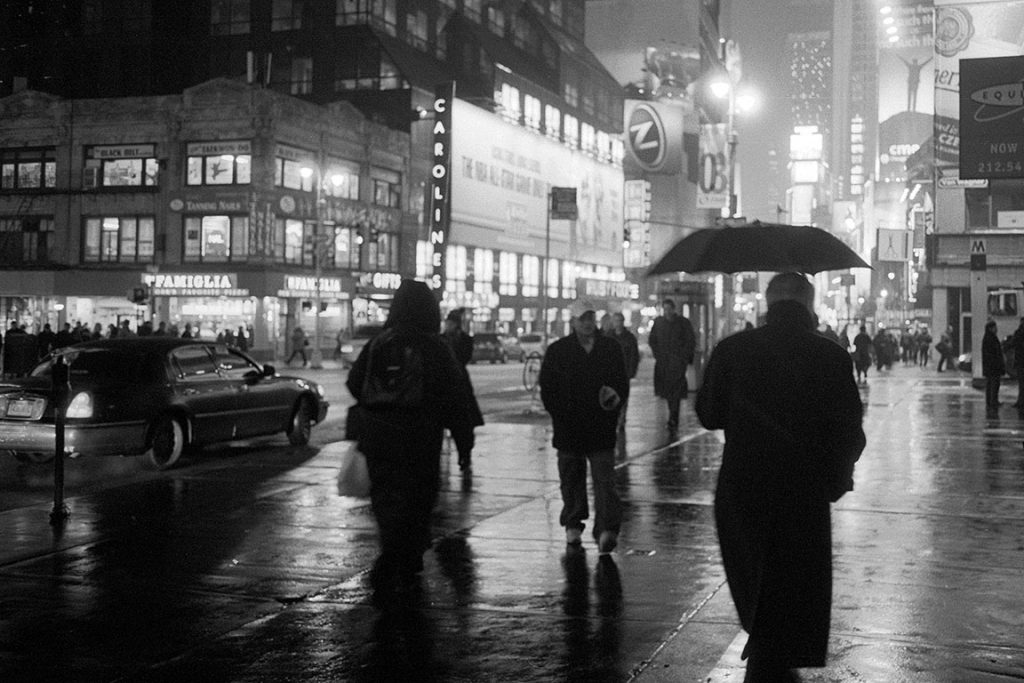
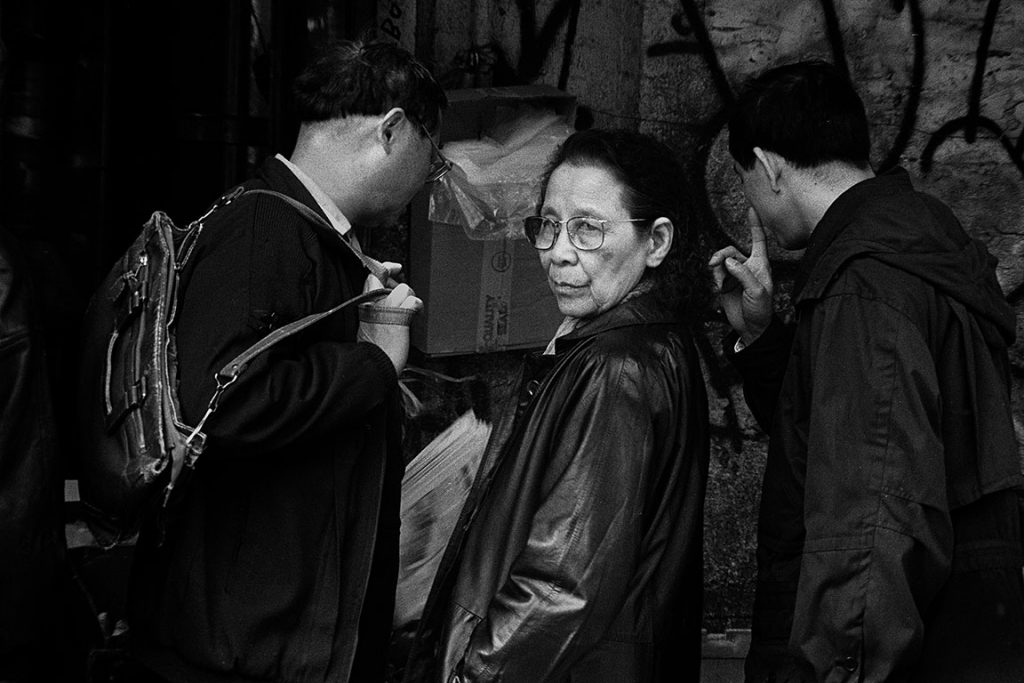
The image evokes the smell of the fish market and of wet cement. Three shoppers, but is it likely that this woman would invite two young men to join her while she did the morning’s shopping? Then, too, one of the men was carrying a brief case slung over his shoulder. Maybe this was not a routine shopping trip.
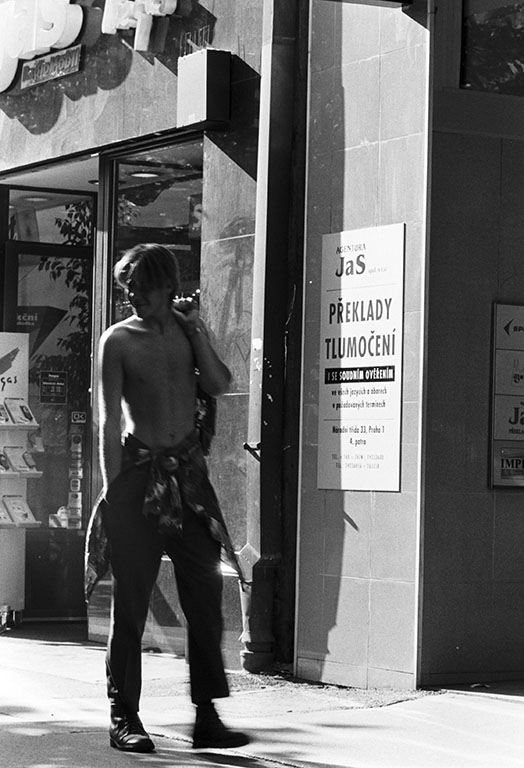
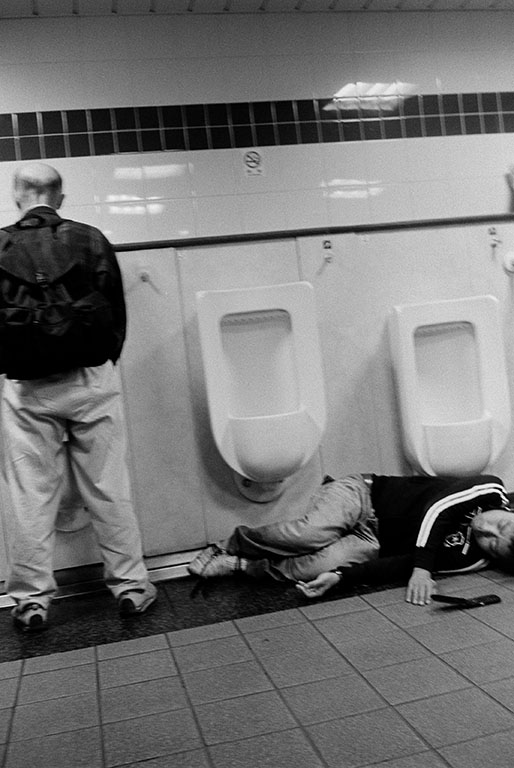
Need I tell my part of the story? Taking photographs in a public toilet is, well, maybe a little outre. I saw the scene and hesitated. Should I, or shouldn’t I? My little voice said, “Take the shot.” My higher brain centers said, “Don’t.” I compromised and shot from the hip.
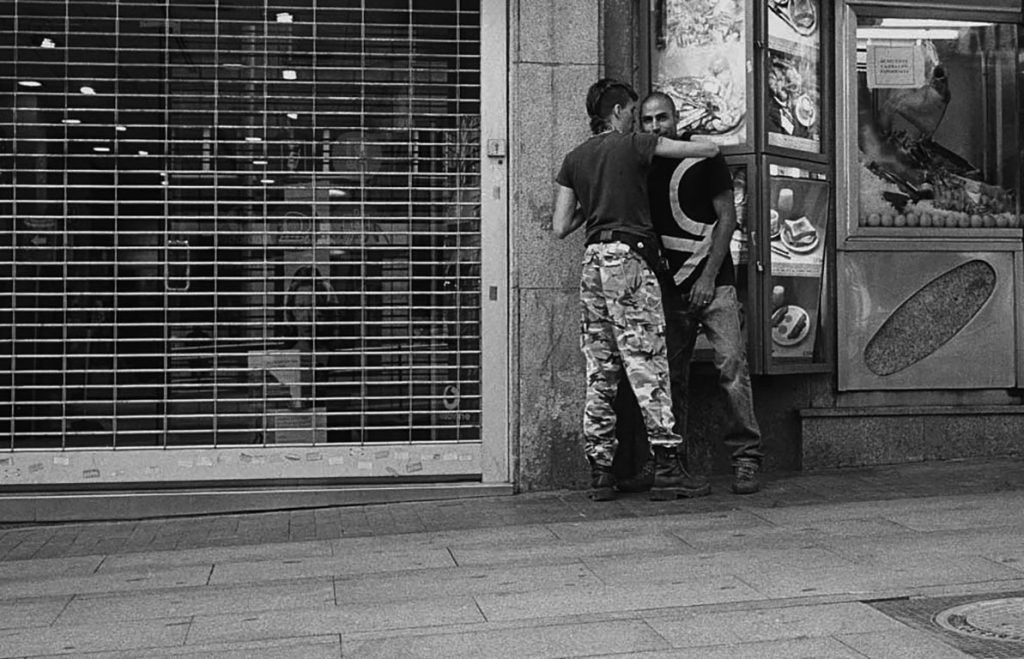
A further story, unfortunately a “not-taken photograph” carries the situation to another level. As I was standing nearby trying to be an inconspicuous photographer, a woman came walking along the sidewalk, an older well-dressed woman carrying her shopping bag. Clearly she saw the two men in their encounter in front of the stores, but she kept on walking. As she walked toward me, she again glanced at the two men and then turned to me with a look on her face that said, “Well, can you imagine that?”
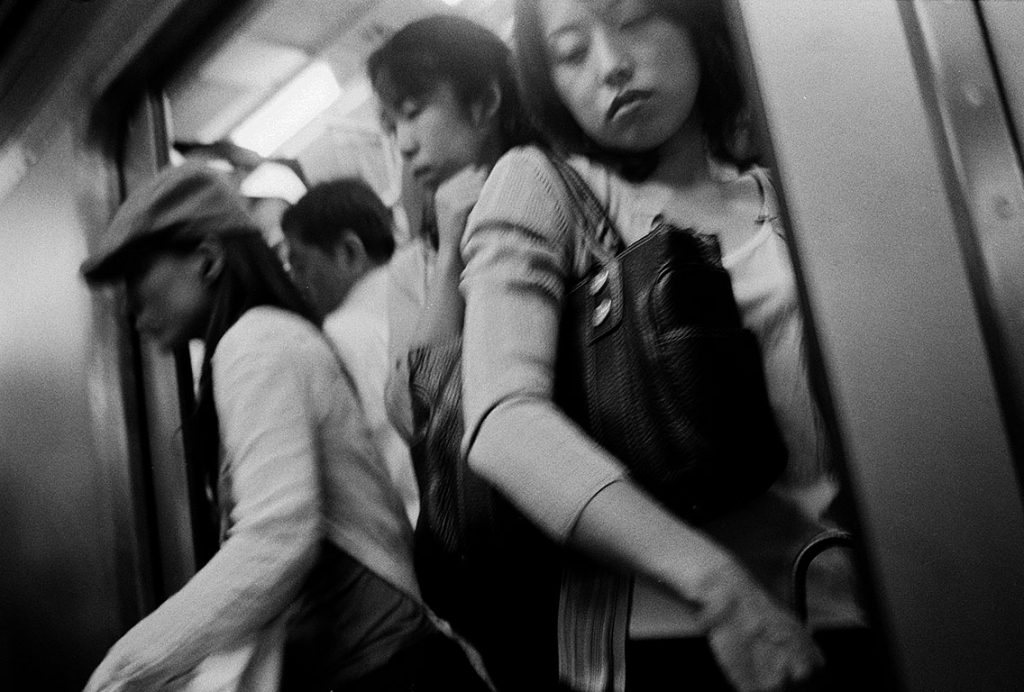
In this image, the soft focus, wonky camera angle and the proximity to the subjects combine to create an unusual aura, an almost impressionist feeling, the setting for a chiaroscuro story.


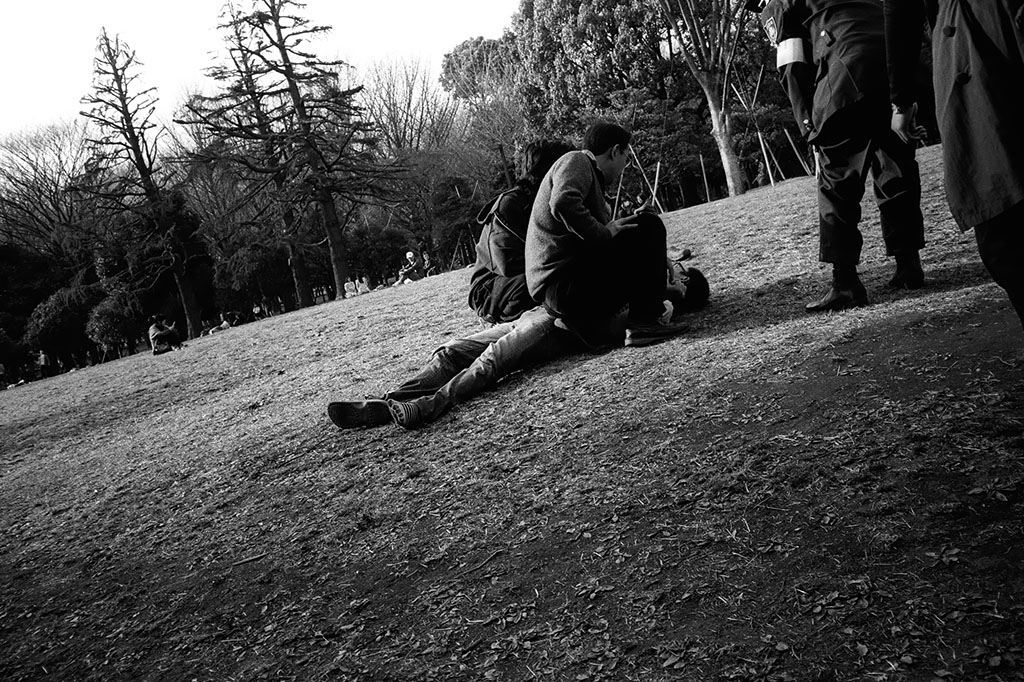
The light was fortuitous and the camera angle unplanned, but both elements contribute to the overall mood of the photograph. Ironically, all the actors in this scene seem to be stationary, though the action that led up to this point was very vigorous. In that sense, the image transcends the reality of the scene, a weak point if this were a documentary photograph but a strong point for storytelling, I think.
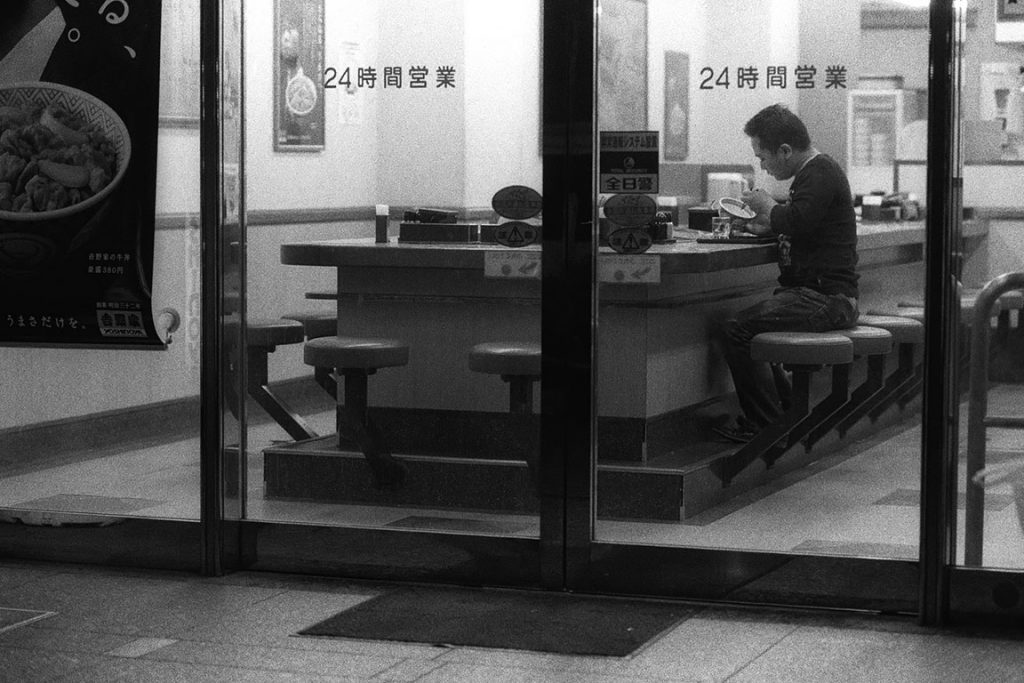
This next photograph clearly is not my style, but I don’t mind. Sometimes the content is more important than the style.

Any story that would emerge from this image would be, in a way, amorphous. But amorphous in a positive sense. Amorphous uncertainty.
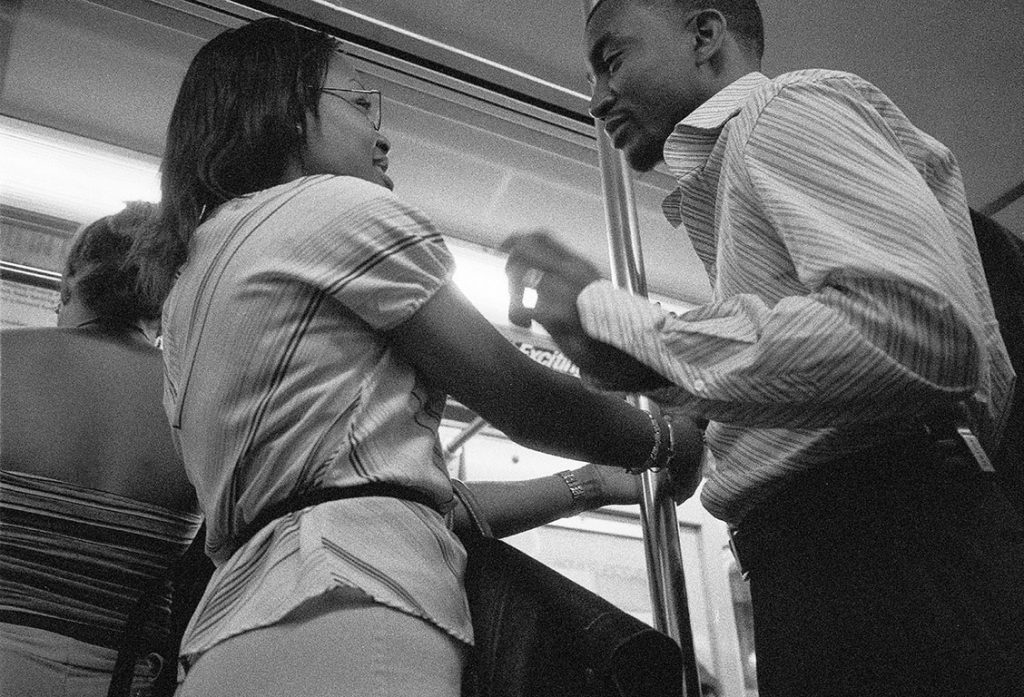
The range of subjects in this episode of the Monochrome Chronicles covers a wide territory. Thus far in the episode, I’ve characterized the images as story-telling photographs. For these next two, on the other hand, I prefer to think of them as showing unintentional street theater.

Another image with an inescapable cultural element, but far different from that in the image of five guys on a street corner in Tokyo. I could suggest an easy interpretation of this photograph, one that would smack of stereotyping. I won’t fall into that trap. Her hand gesture conveys the message. But is she pointing at something on display in the store window, or is she pointing at the woman reflected in the glass?
Sometimes, however, a cigar is just a cigar.
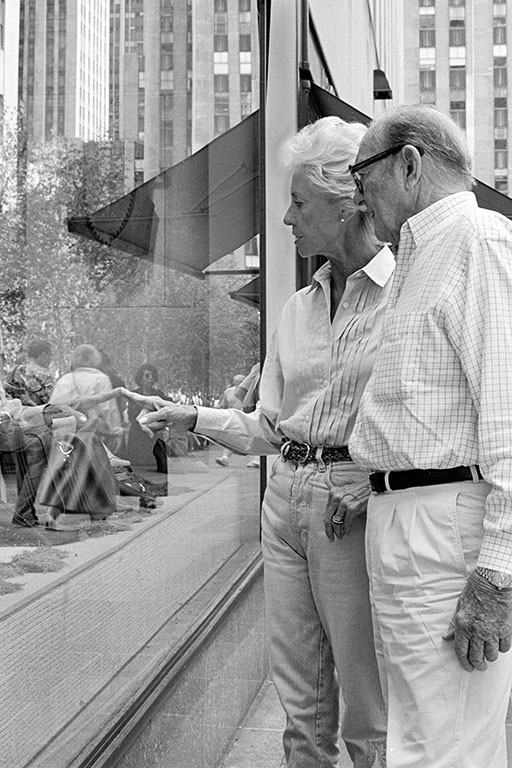
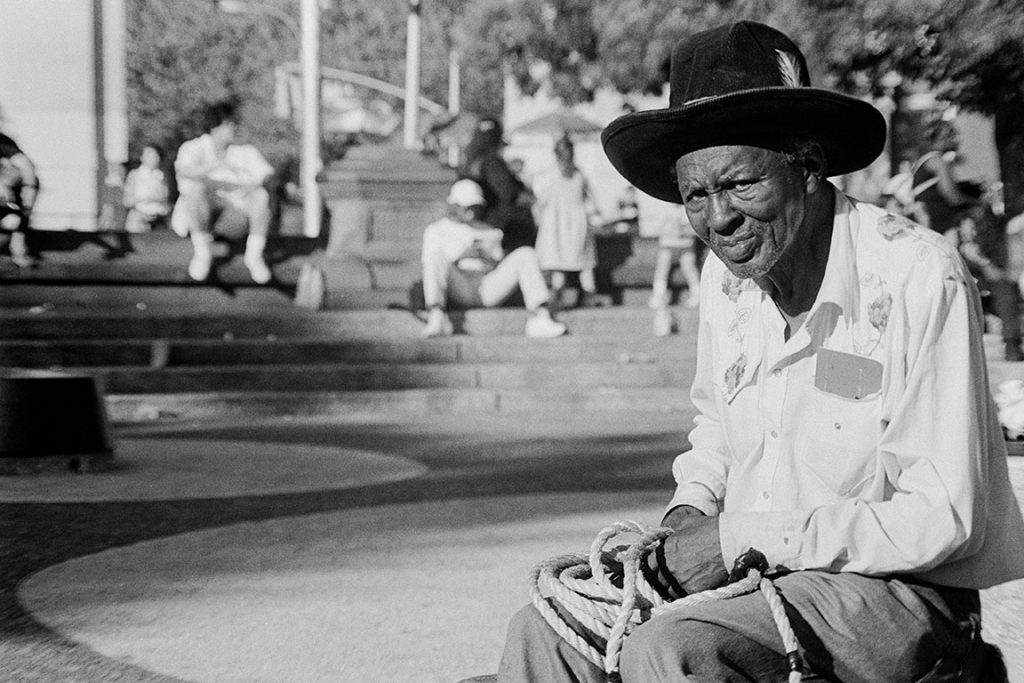
The story in this case would likely be a biographical sketch. The look on the man’s face hints at a long, and probably difficult, history. His cowboy hat, Western shirt and rope suggest that he had spent time outside the city, either out West or maybe even in Hollywood. What stories he could have told.
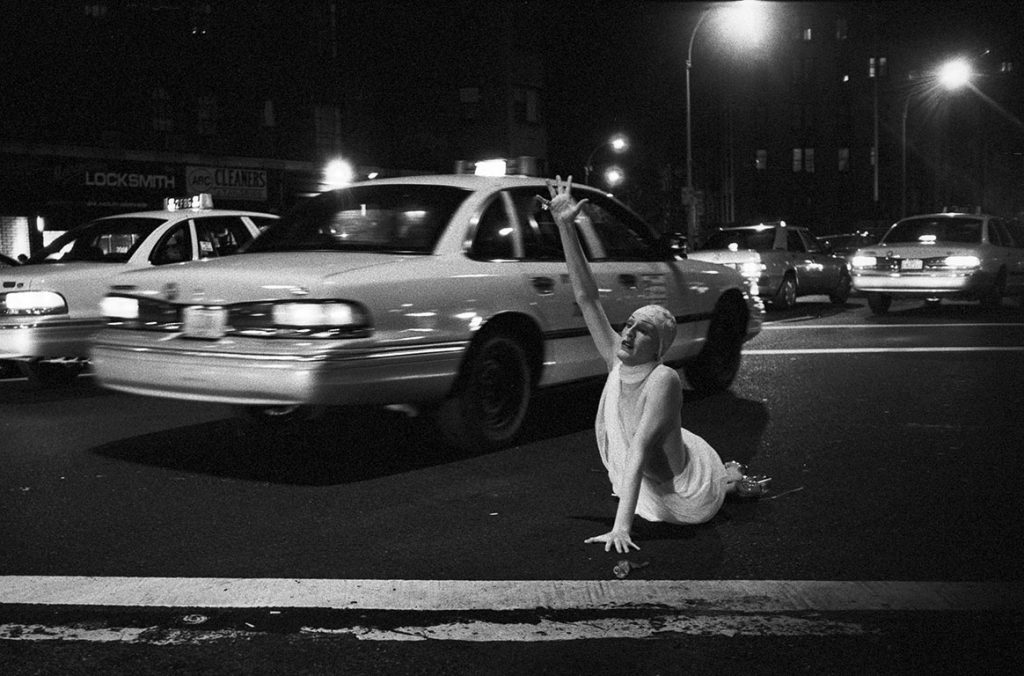
In this installment of the Monochrome Chronicles, I’ve diverged from the main focus of my street photography and ventured into unplanned and unexpected territory: storytelling. As with other elements in my street photography, the storytelling theme emerged mostly retrospectively. Such is part of the creative process.
Even as I was writing this installment, the diversity of these photographs became more evident. Some critics might see this as a weak point. I disagree. Life on the streets is endlessly varied and my photography reflects that. Some may feel that such diversity is disconcerting, but I find it stimulating. Another element is that, when I’m on the streets, I prefer to set no limits, to have no pre-formed concept of what I’m seeking. For 20+ years I’ve carried my camera every day, just to be ready in the off-chance of finding new material.
The question arises about who is the storyteller. I have a consistent answer: not me. My deeply engrained philosophy is that the photographer should avoid telling the story. The me, the guy behind the camera, is out of scope as the storyteller. Now, a small part of me worries that I’m just abandoning part of my role as the photographer. I demur. I believe that my place is behind the camera rather than in front of the photographs.
Enough about me. The next episode of the Monochrome Chronicles will focus on a series entitled “The Hole in the Universe.” A deeper, darker side of my photography, that series is a sequel to the earlier episode, “Existential States.”